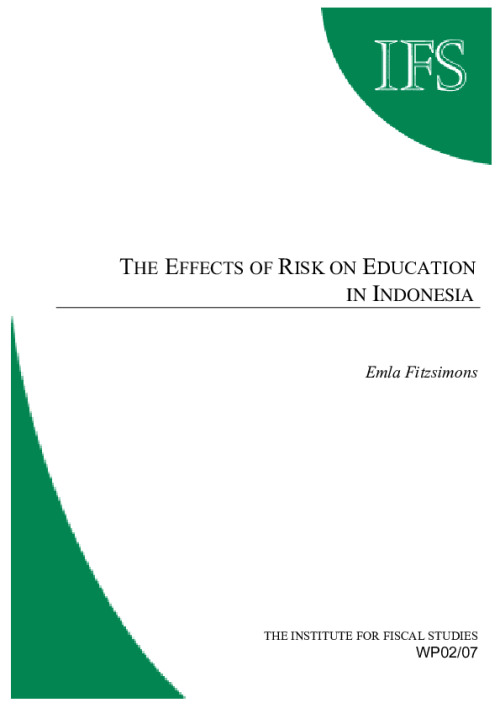We study the effects of risk and uncertainty on education and child labour in developing countries. Those households facing more uncertainty, and lacking access to formal insurance, will have a higher motive for self-insurance and this may have adverse conseqeuences for child education. The model predictions are tested using Indonesian data. A negative effect of risk on education would constitute some evidence of children being used as insurance tools to smooth consumption. On the other hand, whilst a negligible effect of risk may indicate that formal insurance markets are well- functioning, it might also reflect the fact that households are using a wide range of other (possibly costly) self-insurance mechanisms instead. An important distinction is that between aggregate and idiosyncratic risk. Results indicate that in small rural villages where one might expect formal insurance markets to be thin or lacking, idiosyncratic risk has no significant effect on the child's education. Aggregate risk on the other hand, affects education adversely in these villages, suggesting a role for provision of insurance against pervasive income risk. This suggests that policy should be carefully crafted in order to provide insurance for households against pervasive income risk, whilst at the same time ensuring that household-level informal insurance mechanisms are not crowded out. These findings are in line with a range of literature which shows that aggregate risk is more difficult to diversify than idiosyncratic risk.









